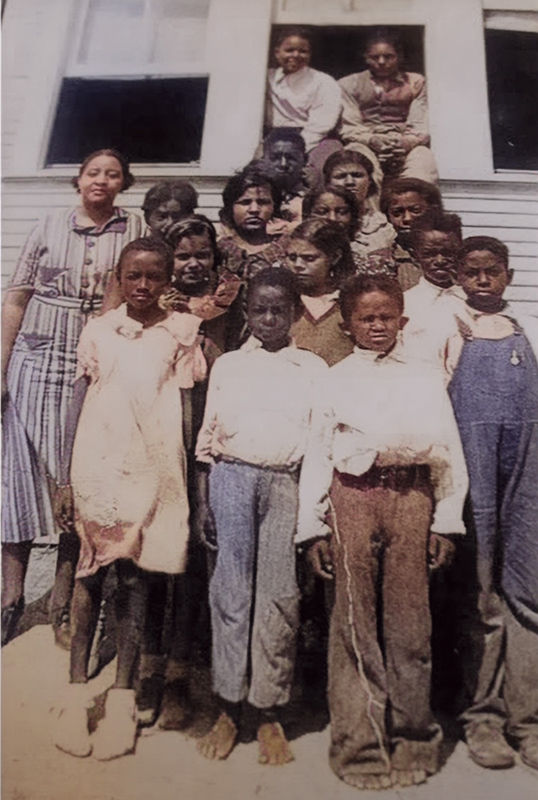Slavery Brought Black Families to Fredericksburg
- CMEC

- Feb 15, 2024
- 4 min read
The Phillips family’s journey from slavery to success
By Christine Granados
Fredericksburg Standard Radio Post - February 14, 2024
Texas of the 1860s was still untamed territory when 15-year-old John Phillips, a runaway slave from Louisiana, arrived in Fredericksburg around 1863.
John landed in Willow City, where he worked as a day laborer. He met and married Mary Duering (sometimes spelled Deering), who was the daughter of Amelia Tinker and Wash, who was believed to be George Washington, one of the slaves on the Doss Cotton Plantation in southern Gillespie County, near Luckenbach.
Amelia Tinker came with the Doss family from Virginia, according to Paul Phillips III.
Doss Plantation
John E. and Thomas C. Doss, originally from Virginia, who founded the Doss community in 1849, were the first large-scale farmers in the county.
“They hewed out a large-size cotton plantation along the south side of the Pedernales River, extending almost up to the range of hills toward Luckenbach,” according to the Fredericksburg Standard’s Centennial edition, May 1, 1946.
When the Doss brothers arrived in Gillespie County, they purchased large tracts of land (6,000 acres) throughout the county and owned and operated a grist mill on Threadgill Creek north of the town of Doss, which they helped incorporate with the mill, according to Robert Hines’ “Texas Small Town History Project” for Palo Alto College.
They also owned a sawmill and distillery, which sold alcohol to Native Americans. The sawmill and distillery were washed away by a flood in 1854 and the grist mill was partially damaged, according to the Standard.
The Dosses sold the grist mill to William F. Lange in 1859, and continued farming and running their plantation on the southeast end of Gillespie County.
“It isn’t known just how many (Black) slaves they had — but it is evident there were quite a few. This was the only slave-holding — or rather, the only plantation in Gillespie county, or any of the surrounding counties,” according to the Standard.
There were five slaves in Gillespie County in 1850, 90 in 1858 and 33 in 1860, according to U.S. Census records.
The Dosses housed slaves in “outbuildings some distance away from the main plantation house,” according to the Standard.
The Doss family plantation encompassed 1,500 acres across bottom land on both sides of the Pedernales River from Blumenthal to Cain City, according to the Standard.
The plantation dissolved after the Emancipation Proclamation and the defeat of the South Confederacy in the Civil War, when federal troops arrived on the Pedernales River in 1867 to enforce the new laws, according to the 1971 Fredericksburg Standard.
Black education
John Phillips eventually became a farmer and a rancher, like his father-in-law, “Wash,” who was indentured for farming.
He raised goats and sheep because they were less expensive to own than cattle, said Paul Phillips III.
John learned to read and write and spoke French Creole and English. He learned German in Gillespie County.
Before land was bought for a school to benefit Black children, Black children were educated with White children.
“The earliest evidence dates back to 1869 when Henry, Laura, Minnie, Ovie and George Washington, whose parents were freed slaves, attended Meusebach Creek School with other children from the area,” according to the Friends of Gillespie County Schools website. “It could be considered one of the first integrated schools in the South.”
A one-room free school for grades 1-6 was erected on an adjacent lot near the Christian Methodist Episcopal Church on East Main Street, around 1877, according to Paul Phillips III.
“Land was bought to build perhaps the first school for Black children in Texas,” wrote Randy Briley. “It’s estimated that 1520 students attended when the school first opened.”
It remained in service until 1946, according to Paul Phillips III.
The lot was purchased from Oscar Basse in 1887 for $80 by James Scroggins and James Tinker, et al., who were named as trustees of the Colored Methodist Episcopal Church (now known as Christian Methodist Episcopal Church) located at 516 East Main St., according to Paul Phillips III.
In barn-raising fashion, Hispanic and German residents of Fredericksburg and Black congregation members came together to build the church, said Paul Phillips III.
They erected a simple frame structure, with a small steeple, atop a native limestone foundation.
“After cycles of disrepair and restoration, the descendants of John Phillips, a 15-year-old runaway slave from Louisiana, continue to advocate for and preserve the historic Colored Methodist Episcopal Church,” Randy Briley said. “We are often a nation divided over local, national and world events. If we choose, we can discount others who don’t view the world as we do or share the same political beliefs.
“However, the descendants of the African American families and their shared stories of perseverance, along with that of the Fredericksburg community coming together to donate and build the school and church represent the very best of who we are and what we can accomplish together,” Briley said.
Dr. Paul Phillips III, Mary Gallagher and Randy Briley contributed to this story.

Students who attended the first all-Black free school in Gillespie County in the late 1800s pose in front of the one-room school building where first through sixth grade studied. Francis Phillips is the second student on the second row from the left.

A young girl in front of the free school erected between 1870-80

The Colored Methodist Episcopal Church, now known as the Christian Methodist Episcopal Church, received a facelift in the 21 Century.




Comments